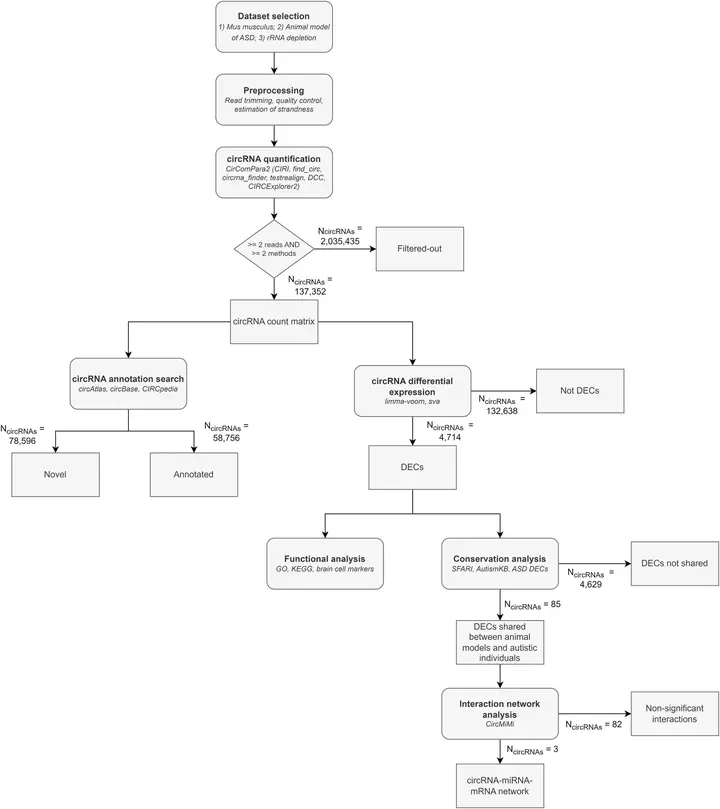A comprehensive bioinformatics analysis of circRNA expression in the brain of distinct mouse models of Autism Spectrum Disorder

Abstract
Autism Spectrum Disorder (ASD) is a neurodevelopmental condition estimated to affect 1% of individuals worldwide. Its etiology is still not fully understood, but several molecular alterations in ASD are related to noncoding RNAs (ncRNAs). Recently, gene expression of circular RNAs (circRNAs) has been shown to be altered in the brains of autistic individuals and two animal models of ASD. Here we use bioinformatics methods to analyze the gene expression of circRNAs in the brain of six distinct animal models of ASD and identify possible alterations shared between models and between models and humans. Method - six publicly available RNA-Seq data sets were used. CircRNAs were identified by a combination of algorithms using CirComPara2 software. Differentially expressed circRNAs (DECs) were evaluatedwith the Limma Voom method, and the functional profile was evaluated with clusterProfiler. Databases of risk genes and circRNAs altered in ASD were used for translational comparison. Results - We have identified over 130,000 unique circRNAs. DECs per se are shared by a few animal models. However, functional analysis revealed that the DECs from distinct models share a similar profile of changes, mostly related to synaptic structure and function. Regarding translational alterations, around 2% of DECs in mice are orthologous to DECs in autistic individuals. Conclusions We provide an overview of the expression of circRNAs in mouse models of ASD. The analyses indicate that synaptic circRNAs may be central to the alterations found. We hope the broad identification of circRNAs can help researchers further explore their selected mouse models.